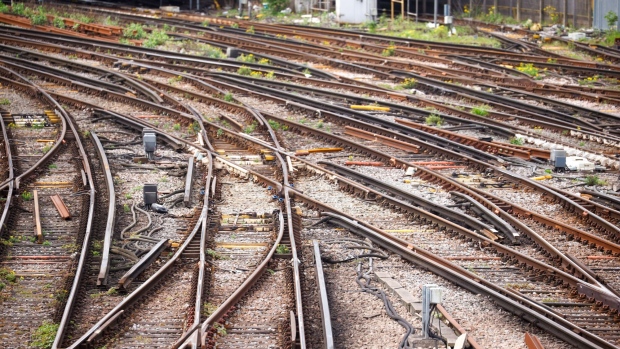Apr 19, 2024
Philippines Wants US, Japan to Take Over Rail Deal Eyed by China
, Bloomberg News

(Bloomberg) -- A Philippine freight railway project may be built with the support of the US and Japan, an official in charge of it said, as Manila seeks alternative financing deals after dropping funding talks with China.
The 50-billion-peso ($868 million) Subic-Clark railway, which will link the former US military bases turned commercial hubs, is being pitched to form part of the Luzon Economic Corridor, a planned showcase of economic cooperation between the US, Japan and the Philippines that was hatched during the first trilateral summit among its leaders last week at the White House.
“Hopefully they take it and invest here,” Delfin Lorenzana, who chairs the Bases Conversion and Development Authority, said in a interview on Friday, referring to the US and Japan. The agency oversees the development of former military bases.
The Philippines said last year that it would no longer pursue Chinese loans to fund three projects, including the 71-kilometer Subic-Clark railway, amid lack of progress from the Chinese side. Manila’s move came amid souring ties between the Philippines and China over competing maritime claims in the South China Sea.
US President Joe Biden, Japan Prime Minister Fumio Kishida and Philippine President Ferdinand Marcos Jr. launched the Luzon Economic Corridor during their April 11 meeting and a trilateral event to promote investment in the project is being planned at the US-led Indo-Pacific Business Forum in Manila in May.
The Philippines said it hopes to generate around $100 billion in investments in the next five to 10 years following the Washington summit.
The project aims to boost connectivity between Subic Bay and Clark, Manila, and Batangas province in the country’s main Luzon island and accelerate investments in infrastructure projects, including rail, ports, clean energy, semiconductor supply chains and agribusiness.
“We have not abandoned the Subic-Clark railway project,” Lorenzana said. A former defense secretary, Lorenzana said he’s “more comfortable” if the US and Japan would take over the project.
“If not them, maybe South Korea, or other countries that are friendly to us,” he said. The government is also considering seeking funding from the World Bank and Asian Development Bank, he added.
Lorenzana said BCDA projects that may be included in the Luzon Economic Corridor include the construction of Clark International Airport’s second runway, seen to cost around $174 million and a 64-hectare Clark National Food Terminal hub, which seeks to make the Southeast Asian nation a leading agricultural resource hub in the region. The food terminal is estimated to cost $152 million.
Subic and Clark are “very strategic” locations that can host industries from logistics to manufacturing, he said.
“Subic is one of the few deep-water ports that can accommodate any size of vessel and it’s safe from typhoon while Clark has a huge space,” Lorenzana said. “And we have the ready manpower that can be trained to do the job.”
©2024 Bloomberg L.P.





